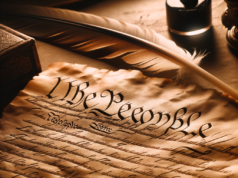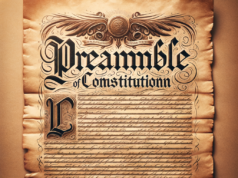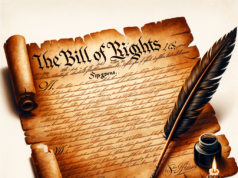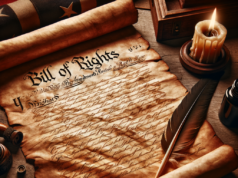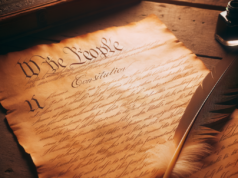
The Approach to Slavery: From Bondage to Emancipation
Introduction
Slavery stands as one of the darkest chapters in human history, a practice marked by centuries of suffering, exploitation, and injustice. The approach to slavery has evolved significantly over time, transitioning from an accepted institution to one vehemently condemned and ultimately abolished in most parts of the world. This article traces the evolution of the approach to slavery, highlighting key milestones in the journey from bondage to emancipation.
The Early Acceptance of Slavery
Slavery is an ancient practice dating back to early civilizations in Egypt, Mesopotamia, Greece, and Rome. It was primarily based on race, social class, or conquest. In these early societies, slavery was often an accepted part of the economic and social order. Enslaved individuals were regarded as property rather than as human beings with rights and dignity.
The Transatlantic Slave Trade
The 15th to the 19th centuries witnessed a dark period in human history: the transatlantic slave trade. Millions of Africans were forcibly captured, transported, and enslaved in the Americas and Europe. This dehumanizing practice was driven by economic interests, as the labor of enslaved individuals fueled the growth of colonial economies.
The Enlightenment and the Challenge to Slavery
The Age of Enlightenment in the 17th and 18th centuries brought about a philosophical shift in how society viewed slavery. Enlightenment thinkers such as John Locke, Montesquieu, and Jean-Jacques Rousseau championed ideas of natural rights, liberty, and the social contract. These concepts raised questions about the morality of slavery and laid the groundwork for the abolitionist movement.
Abolitionist Movements
The late 18th and 19th centuries saw the rise of abolitionist movements in Europe and the Americas. Abolitionists, inspired by moral and religious convictions, began to challenge the institution of slavery. Prominent figures like William Wilberforce in Britain and Frederick Douglass in the United States played crucial roles in advocating for the abolition of slavery.
The Haitian Revolution
The successful Haitian Revolution (1791-1804) stands as a watershed moment in the history of slavery. Enslaved Africans in the French colony of Saint-Domingue (now Haiti) revolted against their oppressors and established the first independent Black republic in the Western Hemisphere. This uprising not only struck a blow against slavery but also inspired enslaved individuals elsewhere to seek freedom.
Emancipation Proclamation and the American Civil War
In the United States, the issue of slavery came to a head during the American Civil War (1861-1865). President Abraham Lincoln’s Emancipation Proclamation in 1863 declared enslaved people in Confederate-held territories to be free. The Civil War ultimately resulted in the passage of the 13th Amendment to the U.S. Constitution, which abolished slavery in the entire country.
The Global Abolition of Slavery
The 19th century saw the gradual abolition of slavery across much of the world, with nations passing laws to end the practice. International treaties and conventions further solidified the commitment to eradicating slavery. The United Nations Universal Declaration of Human Rights in 1948 explicitly condemned slavery, marking a significant step in the global approach to ending this dehumanizing practice.
Contemporary Challenges
While slavery has been officially abolished in most countries, modern forms of slavery and human trafficking persist, posing ongoing challenges. Governments, organizations, and individuals continue to work tirelessly to combat these contemporary forms of exploitation and uphold the principles of freedom and human rights.
Conclusion
The approach to slavery has transformed dramatically over the centuries, evolving from acceptance and justification to condemnation and abolition. The collective efforts of abolitionists, thinkers, and nations worldwide have ushered in a new era where slavery is universally regarded as a grave violation of human rights. While the legacy of slavery still haunts societies in various ways, the ongoing struggle for justice and equality serves as a testament to the enduring commitment to emancipation and the dignity of all human beings.
The notion of slavery and slave trade was a volatile issue during the process to ratify the Constitution of the United States. At the time, slave trade and labor was considered by many politicians and State leaders as a cornerstone of the economy of the United States. The usage of slave labor provided both economic and commercial benefits as a result of a general regard of slaves as subhuman workhorses. Both advocates and supporters of this practice deemed slaves as commodities and utilities, not as human beings, devoid of feelings, senses of self, and families.
At the time, slave trade was regarded in the same light as any other commercial practice; white traders arrived in Africa, seized the natives, and swiftly claimed ownership of them. Africans unjustly and cruelly seized as slaves and forced into slave trade were forced onto overcrowded ships and brought to the United States and essentially sold as commodities that provided free labor. The American slave trade contributed to the near-decimation of a culture, as well as the exploitation of millions of people, most of whom were ripped from their homes and families and subject to subhuman living and working conditions.
Over the course of the ratification process of the Constitution, slavery was a concern both on the part of its vehement detractors like Alexander Hamilton and John Adams, as well as its advocates such as the Representatives from George and North Carolina. However, much like a definitive selection process for State representation, the ratification of the Constitution was contingent on a definitive Constitutional stance on slave trade. In particular, Georgia and North Carolina were immovable with their respective claim that slave trade was essential for their economy, unshakably so that they both refused to ratify the Constitution should slavery be abolished.
The discord that resulted from the debate over slavery prompted the authors of the Constitution to create a gag rule about the topic, which forbid any representative involved from discussing the subject. The gag rule established that slave trade could not and would not be discussed for twenty years after the ratification of the Constitution. Though many of the Founding Fathers were dissatisfied with the creation of the gag rule pertaining to the debate over slavery, they were confident that the ratification of the Constitution would provide a structural and humanistic platform from which abhorrent practices such as slavery could be abolished.
However, the gag rule did not render the results that Founding Fathers who were opposed to slave trade would have hoped. Only after almost a century of the ratification of the Constitution – in 1865, following the end of the Civil War – was slavery finally abolished with the passing of the Thirteenth Amendment of the Constitution.
Slavery is considered by most historians to be the single-most disgraceful, abhorrent, and vile practice in the history of the United States; a practice that displayed a general disregard and disrespect for human life. However, despite the popularity and purported need for slavery in the United States, there still existed progressive visionaries like John Adams who knew the extent of the dreadful practice. Adams is quoted as saying: “Consenting to slavery is a sacrilegious breach of trust, as offensive in the sight of God as it is derogatory from our own honor or interest of happiness.”



